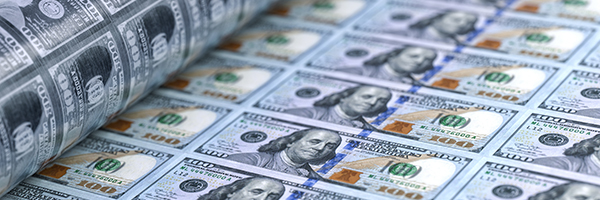Today the yield on the 10-year Treasury closed at 4.71%. That was down 2 basis points on the day but in the last year the yield is up 96 basis points. Almost a full percentage point.
How high can yields go?
Bond traders and investors want to know. Investors in other financial assets, stocks, for instance want to know. The Federal Reserve, which is supposed to set interest rates but is increasingly a sideline spectator on rates, wants to know.
Big name investors don’t necessarily know–but they can influence the trading trend by raising expectations that the market will move in a particular direction. Investors looking at buying bonds, for example, are likely to hold off on pushing the “buy” button because the experts are telling them that bond prices are de to fall some more and bond yields still have room to rise.
In other words, opinions from these sources help create sentiment.
So I listen when William Eigen, manager of the JP Morgan Strategic Income Opportunities Fund, starts talking about 6% yields on the 10-year Treasury. Eigen’s fund was 63% in cash at the end of August and he’s keeping that allocation, he told Bloomberg, because he believes 6% is a possibility. His fund is up 4.1% this year against a 2.7% loss for the bond market as a whole this year. Last year, Eigen recorded a 0.5% gain against a 13% loss for the Bloomberg U.S. Bond Aggregate Index. He thinks the Federal Reserve may raise interest rates at least once more, and then keep them there for as long as 18 months to slow the economy and curb inflation.
And then, of course, there’s the bearish call by Jamie Dimon, CEO of JP Morgan Chase, who has warned that the Fed will need to do more to fight inflation. And that the yield on the 10-year Treasury will, as a result, hit 7%.
So how do you figure these opinions into your bond being strategy. My suggestion is to marry dollar-cost-averaging with a bond ladder. I’d start buying when the yield on the 10-year hits 5%–not all that far away now–and then dollar-cost average with other new money buys as yields climb. No one really knows how high yields will climb. But I do know you’d like to have a significant position in long Treasuries when “something breaks” and central banks have to intervene again. Because that will send yields down and bond prices up.
And I think it’s almost certain that something will break. At 5% yields are putting extreme pressure on indebted first world and developing world economies, on companies with big long-term debt that is due to roll over at higher rates, and on consumers who are seeing the cost of carrying their debt rise. And who knows what shaky assets are lurking on the balance sheets of the world’s lenders. (Well, we don’t know precisely who is holding what questionable paper, but we can point with some confidence in the direction of regional banks in the United States and pretty much the entire Chinese financial sector as likely places for things to break.)
I doubt this ends well.



Jim, it has to surprise no one that with all the “crises” justified deficit spending of the last few years. The constant debt ceiling brinksmanship, and the fed’s willingness to inflate the money supply to pay its way out of a debt crises aka print money…. Makes investment in US bonds much riskier than the current interest rate compensates you for. Plus why invest in US government junk bonds with no seeming limits to new to “crises” justified spending increases, poor governance on debt repayment, when you can invest in CDs that currently yield more and are insured against downside risk? With inflation and taxes making bonds have a negative rate of return, where is the compensation for risk? US government bonds are not currently a good investment, unless you like loosing money. But is there really a good place to safely park money at this point in the US?